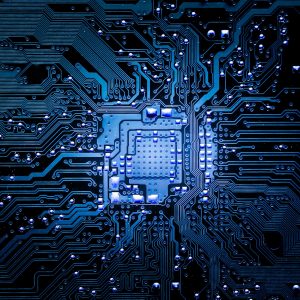
The road to Manufacturing 4.0 or Digital Manufacturing is often characterized as Digital Transformation. In essence, Digital Transformation involves building a parallel digital counterpart to the physical products and processes, then connecting the two worlds – physical and digital – in order to form an integrated
Much progress has been made in building the parallel digital world: creating and maintaining the Digital Twin and the Digital Thread, simulation-based advanced planning and scheduling systems, and more. The emergence of IIoT with myriad sensors and smart devices provide vast quantities of data to keep the digital world tightly linked to the physical. But there are two challenges in making that connection between physical and digital: there’s too much (useless) data being collected and it’s difficult to detect and separate out the really useful bits; older production equipment and controllers are simply not built to communicate and interact with Internet-based (TCP/IP) modern digital systems. The answers to both challenges can be found at the edge, where digital and physical worlds meet.
Edge Computing

Simply put, edge computing refers to adding intelligence and computing power to the devices at the far reaches of the computing network. Rather than simply collecting data and passing it on, remotely installed devices (on the edge) can process the raw data, identify and pass on only the truly useful data, and either discard or process, condense and store the rest for future analysis or use. Furthermore, smart edge devises and can complete time-critical control tasks, offering much-improved response time and greatly reducing the need for communications bandwidth. There’s an additional level of system reliability her, too, as control at the edge can continue to function if there is a disruption or outage in the network or at the primary computing facility.
The problem with existing equipment that currently populates a good many manufacturing plants around the world is that it was designed and built before the emergence of Digital Manufacturing so it does not naturally interconnect with today’s protocols and formats. As computing power was brought into production equipment, PLC controllers and the like were designed for the specific task and not designed to play a role in a distributed network like Digital Manufacturing. Manufacturing Execution Systems generally rely on special converter/communication devices, a type of edge computing, to tie these controllers into plant-level networks. And Digital Manufacturing will do the same, but these converters will be asked to do more as they incorporate IIoT data and additional control functions as part of the Digital Manufacturing ecosystem.
Edge computing is the logical technology to empower the connections between the digital world and the physical world as Digital Manufacturing grows and matures. Edge computing enables older equipment to participate in the Digital Manufacturing environment while enhancing their functionality and preserving their longevity. Edge computing also relieves the bandwidth demands and processing requirements brought on by Big Data while at the same time delivering the fastest possible response time and an increased level of reliability with reduced reliance on network communications to keep the physical world fully functional.

